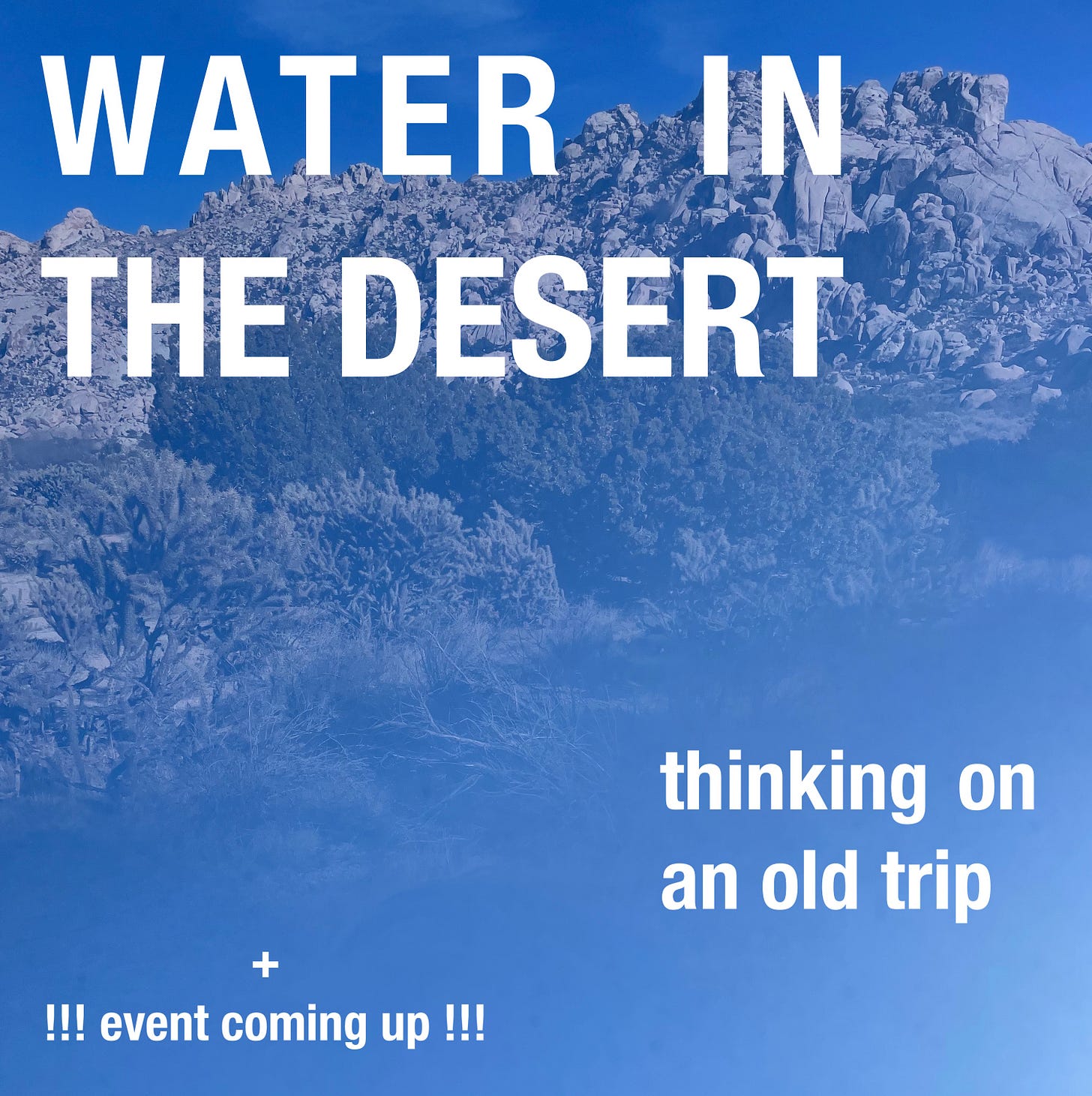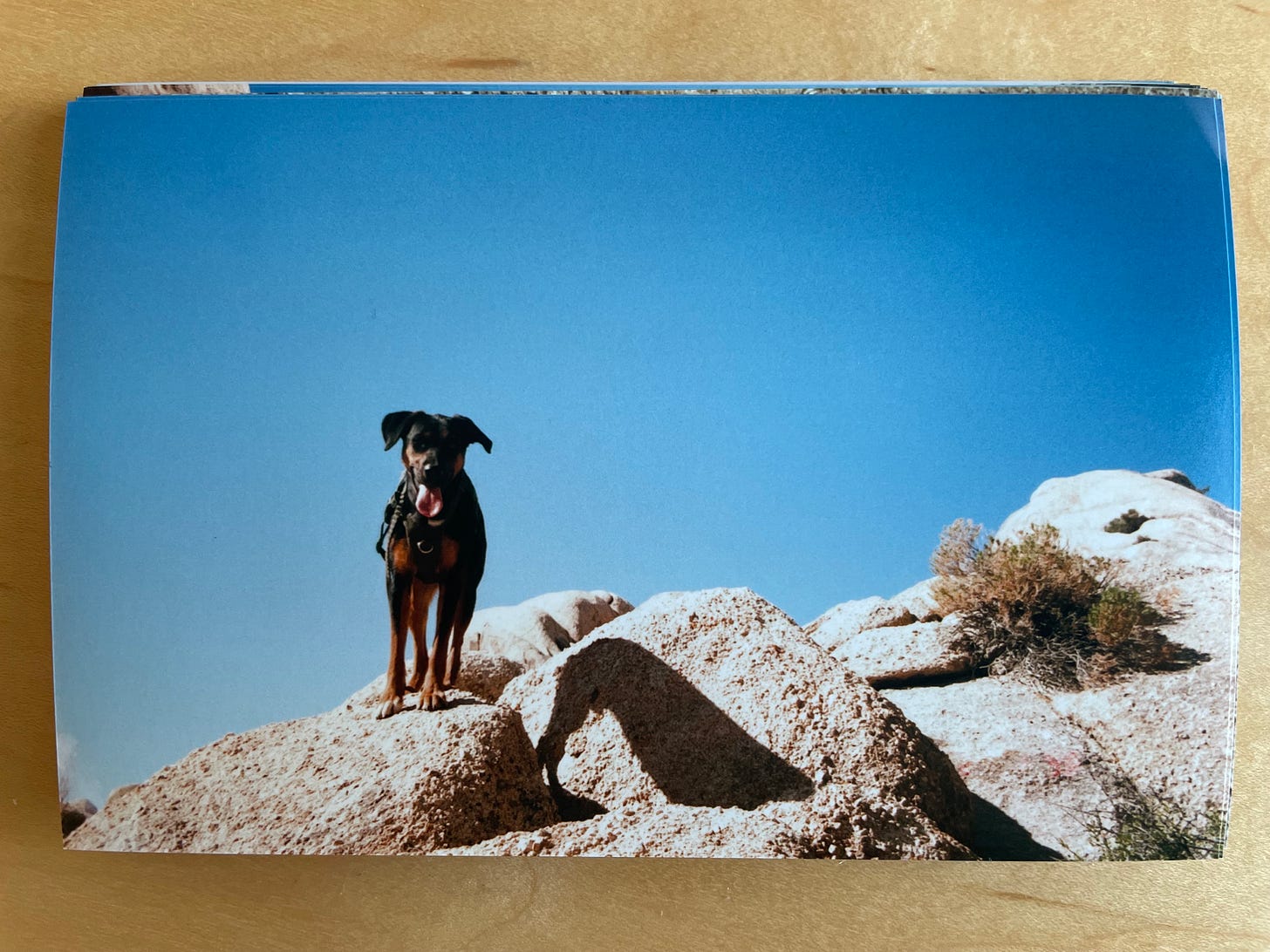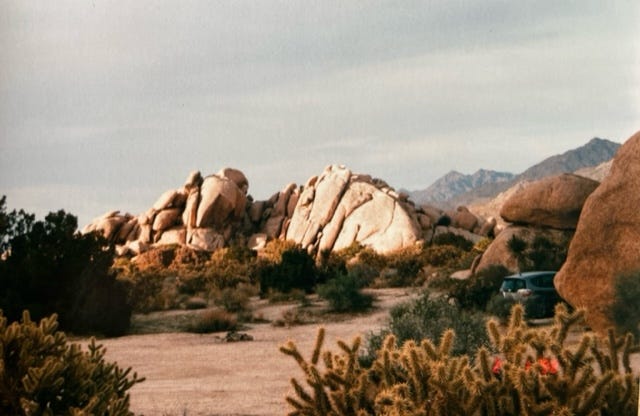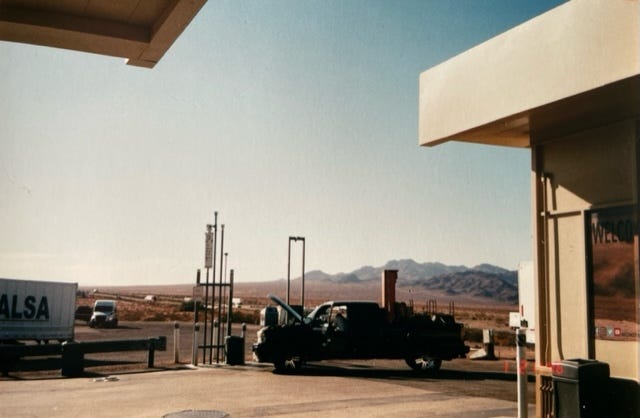The first time I drove to the Mojave Desert was last March. I drove down on my three day weekend to meet my brother Wyatt, his partner, and a few of their friends who had decided to stay in the state park, just tucked away from the road, and enjoy peace in the desert. I remember the drive itself being mostly calm, aside from the occasional pothole and the insanely high gas prices. I remember being there and sitting around, doing mostly nothing. I had recently hurt my knee pretty bad surfing so I couldn’t go on the hike with them, and instead wandered around, caring for Wyatt’s pup named Tule, picking out the inevitable thorns from the cholla and other cacti from his paws. I remember, although it was incredibly hot, and I had nothing to do, how the immensity of that open space was a marvel. The quiet in all the colors and how things seemed to blend, from the cactus wrens to the sky, everything enmeshed. I want to go back there, but I’m not sure when that will happen. I wish I could go right now, just to see what other world exists there today with the desert so full of rain.
It could be a completely different beast, full of blooms across the barren and beige landscape, the rocks a backdrop to the bright colors.
Strangely, the brightness of a bloom there doesn’t really surprise me in the way it used to. When I arrived what first struck me was just how many cacti were there, so many creatures living out in that dry land. It wasn’t the colors that surprised me, or the quiet, but just how alive everything felt. The cacti surrounded us and constantly toyed with us, poking our feet, clothes or hands, a constant reminder that they were there too, alive and well in this place we like to imagine as dead, where we have named the most spectacular valley after death. Looking beside rocks in places that seemed untouched by the sun and had the chill of the previous night, you could find barrel cactus, full and thriving. It all seemed so odd, so impossible. But maybe it only seems that way because of where we evolved—places ripe with water, where hydration wasn’t really a thought.
But there, that is all there is to think about. The water, in a roundabout way, created the spines on the cacti’s back and the openness of the sky. For these plants, the sun wasn’t worth competing for, but instead the water. Now, over much of the Mojave Desert, water is plentiful and the soils are sopping wet. Soon, just as the rains (possibly) end this March, we will see places like Mojave National Preserve, Anza-Borrego State Park, and Death Valley, bloom into a rare sort of spring—a spring that typically happens once a decade but has already happened twice in the past seven years. Is it because of climate change, all this rain? Maybe. It’s honestly hard to tell and scientists seem unsure as of today.
All I’m writing this short piece for is to tell you that the marvel of the desert, in some parts, is going to become a jewel. If you know of anyone going, ask them not to step on a single plant. It can destroy that footstep for literal decades. These blooms are rare, and are important for the life of those plants. So be respectful, and love the silence of the desert.
///
EVENT UPCOMING April 1st!
I didn’t have that much time to explore this essay on the desert further because, for the past few weeks, I’ve been getting ready for a Hersey Family Art Show that will be at Gospel Flats Farmstand through all of April! Come on the First (a Saturday) from 12-4 for the opening! Our homie Conner (aka DJ ♾%) will be spinning some tunes and there will be hella snacks to munch and drinks to sip while looking at all our stuff!
DESERT PHOTOS









